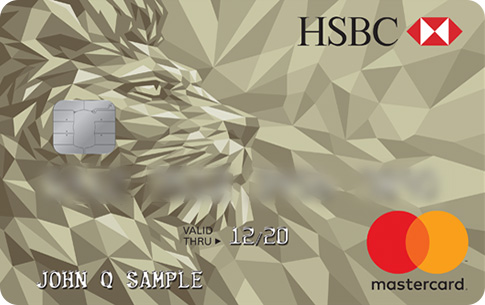How to Build a Market Segmentation Strategy for Your Company

Quick Navigation:
- A Model for Market Segmentation: MasterCard and the World Cup
- How MasterCard Went About Their Work
- Step 1: Defining the Serviceable Market and Selecting Segmentation Criteria
- Step 2: Perform Market Analysis Research Based On Segments
- Step 3: Identify the Target Market For a Campaign
- Step 4: Tailor Marketing and Advertising to Your Target Market
- Building Your Own Market Segmentation Process
By Aaron Moss, PhD, Cheskie Rosenzweig, MS, & Leib Litman, PhD
Part III: How Mastercard Utilized Market Segmentation to Build a Winning Strategy for the 2006 World Cup
Let us assume that you understand what market segmentation is and how brands can benefit from it.
Now, you need to take the steps of planning and executing a segmentation study. In this section, we walk you through each step of the market segmentation process and use a real-world example as a model for how you can structure your own project.
This is the story of MasterCard, and how they used market segmentation to increase credit card applications by more than 200% during the 2006 World Cup (Moskowitz & Gofman, 2007).
A Model for Market Segmentation: MasterCard and the World Cup
As Howard Moskowitz and Alex Gofman write in their book, Selling Blue Elephants, MasterCard was approached by the Hongkong and Shanghai Banking Corporation (HSBC) about the possibility of issuing a co-branded credit card before the 2006 World Cup.
Although it may not appear so on the surface, the market for credit card customers is highly competitive. Consider these facts.
- In 2019, Americans owed more than $1 trillion in credit card debt. Other developed nations have similarly high figures.
- If credit card companies charged just 2% in processing fees — and they often charge more — their industry in the U.S. alone is worth more than 20 billion dollars
- Most people with credit good enough to open one card will open multiple cards.
- Finally, most people ignore mailed or digital credit card offers, which means most credit card launches fail to meet expectations.
It is within this highly competitive world that MasterCard needed to find the right message to persuade people to apply for their World Cup card in 2006, and they needed to do so fast. By the time MasterCard and HSBC agreed to the deal, they only had two weeks to finalize the messaging and marketing of their card.
How MasterCard Went About Their Work
Step 1: Defining the Serviceable Market and Selecting Segmentation Criteria
With such little time, the first thing MasterCard did was sit down and think.
MasterCard knew they wanted to place their card into the hands (and wallets) of people in the emerging Asian middle class. As a bank with roots in China, HSBC could help MasterCard understand the target market, but MasterCard would need to find the right message to resonate with consumers.
To find that message, MasterCard began by listing features of the card they could promote and what benefits they might offer cardholders. These variables included things like what to name the card, what the card would look like, whether to have an athlete endorse the card, what kinds of rewards to offer with the card, what kinds of messages to use to connect the card with the World Cup, and whether to offer people an incentive to apply for the card. Broadly speaking, these features comprised MasterCard’s segmentation criteria.
Step 2: Perform Market Analysis Research Based On Segments
To understand how important each of these features were to potential customers, MasterCard conducted a small survey in which they asked people to rate how much different features contributed to their interest in the card.
Armed with pilot data, MasterCard moved to a critical stage of their process. They took the features people rated highly and combined them into several sets by mixing and matching. This mixing was critical because it allowed MasterCard to experimentally test which combination of features would have the greatest impact on people’s interest.
With the design of their study set, the MasterCard team performed their market analysis by conducting an online study in which participants were presented with several variations of a credit card offer. In some versions of the study, people viewed a credit card with a specific look and layout combined with different card benefits and application rewards like a free World Cup watch.
In other versions, people viewed a different look and layout with a message emphasizing the chance to win a trip to the opening round of the World Cup. Combining different features in an experimental study allowed MasterCard to evaluate how much each feature contributed to people’s interest in the card. Using an online panel provider, MasterCard obtained a sample of participants that contained some HSBC customers and other banks. Altogether, the data collection lasted just three days.

Step 3: Identify the Target Market For a Campaign
With the data in hand, MasterCard set about analyzing people’s responses. In doing so, two clusters of consumers emerged: one interested in accruing free stuff and the other interested in feeling like they were participating in a part of the World Cup.
The features most important to the free stuff group were things like receiving a commemorative watch, accruing bonus points, or receiving a $300 gift card. For the second group, however, the important features were being entered into a raffle for a chance to win a trip to the early rounds of the World Cup or a gift card to a local sporting goods store.
Step 4: Tailor Marketing and Advertising to Your Target Market
From the two clusters of consumers that emerged from the market segmentation, the team crafted messages based on features rated highest by the two segments.
As a result of the market segmentation MasterCard conducted, their World Cup credit card accumulated more applications in one month than it was forecast to receive within an entire year. Applications for the card increased by more than 200%. In addition, of the six different World Cup branded cards that were launched in 2006, the MasterCard partnership with HSBC was the only card that survived thanks in large part to the market segmentation. In other words, taking the time to understand consumers and give them what they wanted, allowed MasterCard to win an important chunk of the market in the highly competitive world of consumer credit cards.
Building Your Own Market Segmentation Process
MasterCard’s example holds several lessons for businesses interested in conducting their own market segmentation and outlines the key aspects of the process.
Define Your Target Market
MasterCard wanted to encourage middle-class consumers to apply for the World Cup card. However, the market MasterCard sought to study was not as vague as middle-class consumers or as specific as HSBC customers.
MasterCard targeted people with a range of household incomes and who banked with various institutions. By specifying the target market in this way, the company was able to craft a message that persuaded many people to apply for the card.
Select Your Segmentation Criteria
Perhaps the hardest part of any segmentation study is thinking through the criteria to use for segmentation. Although segmentation can be based on a variety of variables, MasterCard chose to focus on features of their credit card that might be interesting to consumers.
When choosing segmentation criteria, businesses are often guided by the nature of the question they’re trying to solve. If you are developing a new product, consider who is likely to use that product and which features might be most important to them. The goal here is to choose broad categories and then select specific variables that participants can later evaluate.
Find an Appropriate Sample and Perform Market Analysis
MasterCard’s market analysis involved an online experiment. By recruiting people online, MasterCard was able to quickly and efficiently gain access to a large pool of people and to gather all the data they needed within days.
Although MasterCard performed an experiment, market analysis sometimes entails running a survey or multiple user testing sessions. Either way, the market analysis is a stage in which the business gathers data from people in the target market.
Identify Your Target Market
Using statistical analyses, businesses can identify clusters of consumers who respond to different messages or features of a product. The statistical analyses behind market segmentation can sometimes be complex. Researchers often use methods like cluster analysis and factor analysis to identify which features explain variability between consumers. Once these clusters are identified, however, the business can move to crafting a marketing message.

Adopt a Strategic Marketing Campaign
Using the results of a statistical analysis, a company can craft marketing messages that speak directly to the needs and wants of their consumers. When market segmentation is done well, businesses often reap large returns on their investment due to providing customers what they are most interested in.
If you’re interested in conducting a market segmentation study, CloudResearch can help. Whether you are in the planning stages and need help finding the right questions to ask or you are ready to collect data, we have the expertise and tools to help. Our online research tools provide access to more than 50 million participants worldwide. You can use our platform to reach nearly any target market and carry out your study quickly and efficiently. In addition, our team has the expert knowledge necessary to conduct a market segmentation study for you and can help you analyze your data with methods like cluster, factor, and conjoint analysis. Using our managed research service, our team will work with you to understand your target audience and what is important to them. Then, you can craft messages that speak to your customers’ needs. Learn how we can help you by getting in touch with us today.



